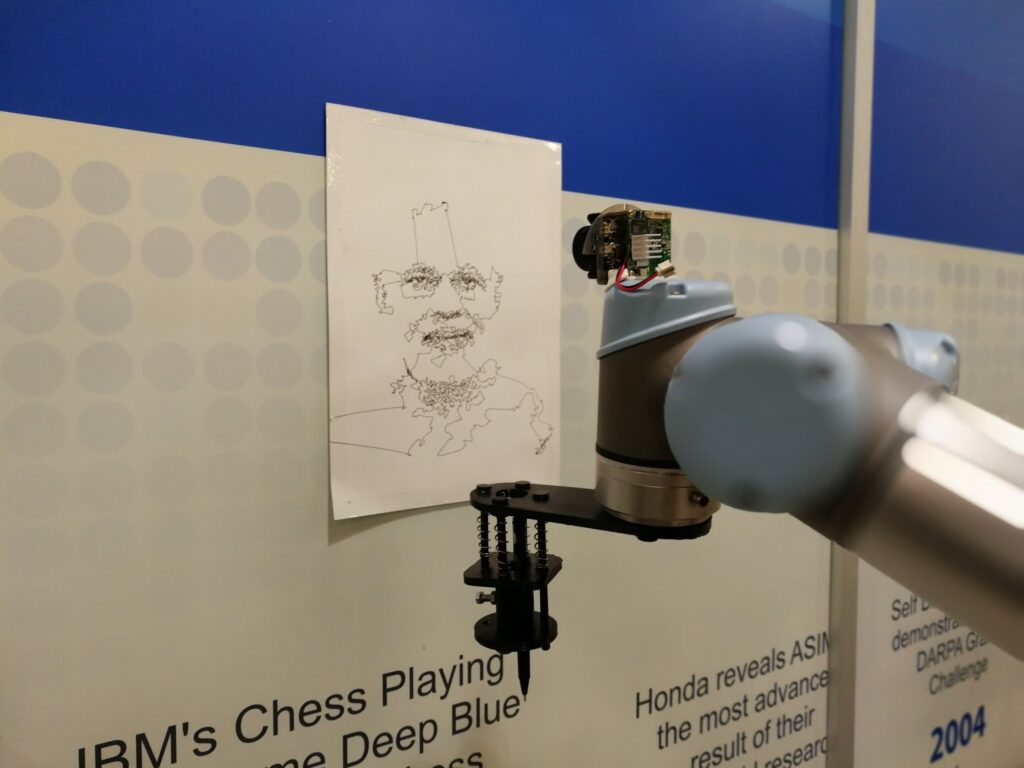- TCS researchers develop a robotic system called Chitrakar which can convert human portraits into Jordan curves using state of the art, deep-learning methods, image processing and robotics.
- This system was developed using two concepts namely Jordan curves and Travelling Salesman Problem(TSP)
- This system can make this Jordan curve drawing in just 30 minutes which is impossible for human artists.
AI researchers have always amazed us, isn’t it? Now we have an AI system that can automatically convert an image of a person’s face into a recognizable non-self-intersecting loop, known as a Jordan curve. Researchers at TCS Robotics Research Lab in India have recently achieved this. And we can use this curve to produce a realistic drawing of a person in the original image, using a robotic hand.
Aniruddha Singhal, one researcher who carried out the study, said that the idea was inspired by reading a collection of best mathematical writings. Singhal related two concepts namely Jordan Curves and Travelling Salesman Problem (TSP) Art
Jordan Curve
A Jordan curve is essentially a single line that starts and ends in the same point in space, drawing an image without ever intersecting itself.
TSP Art
TSP art is an art in which images are produced by drawing a single, non-intersecting line.
Singhal, who is a roboticist, started studying the possibility of automatically producing TSP drawings, which are very difficult for humans to create. He created Chitrakar, which is a system that can transform an image into a drawing composed of a single, long line, ultimately turning it into a Jordan curve. This was done with the help of his colleagues at TCS Robotics research lab. Chitrakar means painter in Hindi/Sanskrit.
The system uses state-of-art, Deep learning techniques to segment the human face from a photo and combines this with image enhancement techniques. The enhanced image is stippled, and the points are connected by a TSP solver where each point is assumed to be a destination of a travelling salesman. The final route of the travelling salesman is converted to a Jordan curve by an intersection removal technique.
The system Chitrakar can convert any image of the human face into a Jordan curve, and this curve can draw artistic TSP portraits.
Singhal explained that it was such an impressive feat to combine state-of-the-art deep-learning methods, image processing and robotics to enable a robotic arm to draw a portrait in its own unique style. He added that it was so satisfying to see a robot draw your face in a unique style.
Robotic gripper designed by the team can hold a variety of different pens, which produce slightly different drawings. It can create a drawing with a decent result in about 30minutes, which is impossible to achieve by human artists. The researchers’ system is currently being patented in several countries and could eventually become widely available.
“We now plan to extend this for other mediums which are difficult for humans to handle,” Singhal explained. For instance, we plan to use Style-GAN and other generative models to generate unique portraits from a picture and then convert them into line or pencil sketches.
Journal Reference:
Chitrakar: robotic system for drawing Jordan curve of facial portrait. arXiv:2011.10781 [cs.RO]. arxiv.org/abs/2011.10781

